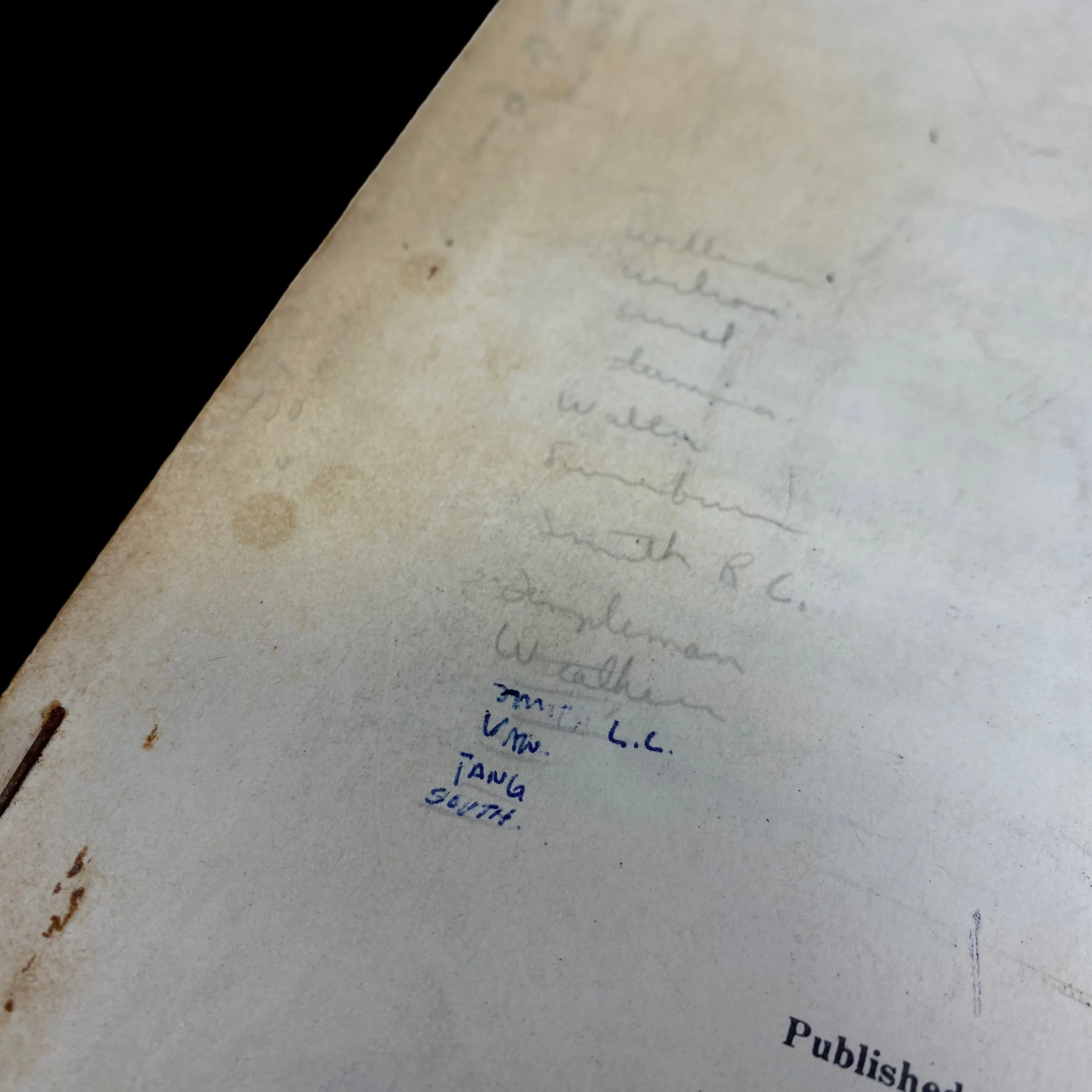RARE! 1962 Vietnam War “INFANTRY WEAPONS” MARINE CORPS SCHOOL Quantico Virginia Training Manual (Rifles & Explosives)*



































RARE! 1962 Vietnam War “INFANTRY WEAPONS” MARINE CORPS SCHOOL Quantico Virginia Training Manual (Rifles & Explosives)*
Comes with a hand-signed C.O.A.
This rare and museum-grade Vietnam War artifact was used at the infamous MARINE CORPS SCHOOL at Quantico, Virginia to train US Marines on “INFANTRY WEAPONS”. Dated 1961 this extremely detailed Vietnam War manual was produced in very limited quantities and was used to teach about… pistols, rifles, automatic rifles, hand grenades, rocket launchers, machine guns, flamethrowers, and mortars. This is an extremely detailed document detailing some of the most confidential information for teaching US Marines about some of the most deadly weapons they would use on the battlefield. This manual contains secret diagrams, pictures, maps, and data.
The Vietnam War, which lasted from 1955 to 1975, was one of the most significant conflicts of the 20th century. It was marked by unconventional warfare, dense jungles, and the challenges of counterinsurgency. American military forces faced unique and complex circumstances in Vietnam, leading to the development and deployment of a wide range of small arms, infantry weapons, and explosives. In this essay, we will explore the various U.S. weapons employed during the Vietnam War, including pistols, rifles, automatic rifles, hand grenades, rocket launchers, machine guns, flamethrowers, and mortars, and their roles in this tumultuous conflict.
Pistols
Pistols were an essential sidearm for U.S. military personnel in Vietnam. The most commonly used pistol was the Colt M1911A1, chambered in .45 ACP. Its stopping power and reliability made it popular among soldiers and marines. The M1911A1 proved valuable in close-quarters combat and as a last line of defense. However, it was relatively heavy and had a limited magazine capacity of seven rounds.
Rifles
The standard issue rifle for U.S. infantry during the Vietnam War was the M14, which was chambered in 7.62x51mm NATO. While the M14 was a powerful and accurate weapon, it had its drawbacks in the dense jungle terrain of Vietnam. Its weight, limited ammunition capacity, and long barrel made it less suitable for close-quarters combat and jungle warfare.
To address these limitations, the U.S. military developed and deployed the M16 rifle, chambered in 5.56x45mm NATO. The M16 was lighter and more maneuverable than the M14, and its smaller caliber allowed soldiers to carry more ammunition. However, early versions of the M16 faced reliability issues due to improper maintenance and ammunition problems, leading to criticism from troops. These issues were largely resolved with subsequent improvements, including the introduction of the M16A1.
Automatic Rifles
One of the iconic infantry weapons of the Vietnam War was the M60 machine gun. Although it was officially classified as a medium machine gun, the M60 was often used in the automatic rifle role due to its portability. It was chambered in 7.62x51mm NATO and had a belt-fed system, providing sustained firepower. The M60 was a versatile weapon used for suppressing enemy positions and providing cover fire for advancing troops.
Hand Grenades
Hand grenades were crucial for close-quarters combat and clearing enemy bunkers and tunnels. The M26 and M61 fragmentation grenades were commonly used by U.S. forces. These grenades had lethal fragmentation patterns and were highly effective in the dense jungles of Vietnam. Additionally, the M18 smoke grenade was employed for concealment and signaling purposes.
Rocket Launchers
Rocket launchers played a significant role in infantry combat during the Vietnam War. The M72 LAW (Light Anti-Tank Weapon) was a portable, single-shot rocket launcher used by U.S. troops to engage enemy bunkers and light armor. The M72 was lightweight and easy to carry, making it a valuable asset for infantry units.
Machine Guns
In addition to the M60, the Browning M2 heavy machine gun was used by U.S. forces during the Vietnam War. This .50 caliber machine gun was primarily mounted on vehicles and aircraft but was sometimes used in a ground role to provide suppressive fire and engage enemy positions at longer ranges.
Flamethrowers
The Vietnam War saw the deployment of flamethrowers, specifically the M2 and M9 models. Flamethrowers were used to clear dense vegetation, destroy enemy bunkers, and demoralize enemy forces. The psychological impact of flamethrowers on both enemy combatants and civilians cannot be overstated. However, they were also subject to criticism for their indiscriminate nature and the gruesome nature of their effects.
Mortars
Mortars were indispensable for both offensive and defensive operations in Vietnam. The M29 and M30 mortars were commonly used by U.S. forces. These portable weapons provided indirect fire support, allowing troops to engage enemy positions hidden in the jungle. Mortars were also used for illumination rounds to light up the battlefield at night.
The Vietnam War presented unique challenges for U.S. military forces, necessitating a diverse range of small arms, infantry weapons, and explosives. From pistols to rifles, automatic rifles, hand grenades, rocket launchers, machine guns, flamethrowers, and mortars, each weapon served a specific purpose on the battlefield. The development and deployment of these weapons reflected the evolving nature of warfare and the need for adaptability in a complex and unconventional conflict. While the Vietnam War remains a contentious chapter in American history, the small arms and infantry weapons used during this conflict played a crucial role in shaping the strategies and tactics employed by U.S. forces.